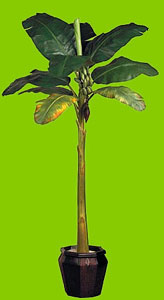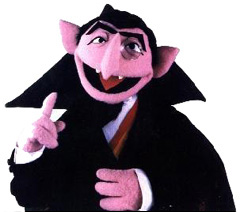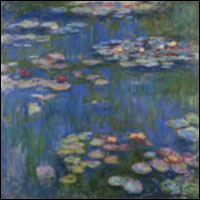

|
Jealousy Alain Robbe-Grillet, 1957 "You are standing in an open field west of a white house with a boarded front door." So begins Zork I, at least after you remove the extraneous comma. Let's consider this.
But what about that "west of"? What does that do? Well, it helps me imagine what the scene would look like from overhead if I were watching it on Google Earth. And it might help me place the sun, if I knew what time of day it was, which I don't. Descriptively, it is useless. But Zork I is interactive, and since using compass directions obviates the need to track the direction the player character is facing, most interactive fiction is liberally peppered with descriptions full of words like "north" and "south" and "west." Now compare the opening sentence of the English translation of La Jalousie by Alain Robbe-Grillet: "Now the shadow of the column — the column which supports the southwest corner of the roof — divides the corresponding corner of the veranda into two equal parts." This novel is not interactive. I will not need to type >NE in order to make the player character enter the house. So why specify that we are observing the southwest corner of the house? It does establish that our scene is set in the Northern Hemisphere near sunset. But really it's just the reader's first taste of Jealousy's bizarrely misplaced obsession with spatial relations. Let's continue:
This paragraph is interesting insofar as it is a completely ludicrous way to start a novel. My eyes just slide right off it. Nothing is happening, so why read it? It's not as though carefully considering each of those words in turn is going to appreciably add to my mental picture of this place. Now, you might say that this is simply my own shortcoming and that you consider the above a perfectly legitimate opening paragraph. Yes? Then let's keep going. A few pages into the novel, we encounter this:
Note: this is just an excerpt. He actually spends a much larger chunk of the novel counting banana trees. It's a truly colossal waste of space. So even those who gamely tried to imagine the opening paragraph must get the point here: no one is really going to wade through this.
So what did Robbe-Grillet intend? On the surface, this seems like a Pattern 16 book, attempting to show that literature doesn't work by deliberately writing bad literature, but I did a little bit of poking around and discovered that he had a somewhat less inane agenda. Robbe-Grillet seems to have sought to remove psychology from narrative — to let objects be what they are, rather than what they mean to us. The results show that this is a total disaster, which is a useful thing to know. In fact, while Jealousy is completely, utterly, laughably unreadable, I can't get angry at it, because I feel that it actually taught me quite a lot. For one, I feel as though for the first time in my life I understand impressionism. When I first learned about impressionism, I was told that the impressionists painted things, not the way they were, but they way they felt. My response, upon seeing highlights of the impressionist canon: "So things feel... blurry?" But I shouldn't have been so dismissive — as my Zork I exercise above shows, things do feel blurry, at least to me! So why did impressionism fail to resonate with me? I think John Searle nailed it in a lecture I went to a couple of weeks ago:
Impressionism in painting, therefore, is interesting insofar as it doesn't work. But impressionism in writing, Jealousy demonstrates, is absolutely vital! Prose cannot convey a picture of the way things truly are even a fraction of a percent as well as photography or painting — when you try, you end up with the word salad that makes up Robbe-Grillet's novel. What prose can do is offer a telling fragment that suggests the whole, a comparison that conveys the feeling of the place. It can't really do spatial relations. And that brings me back to interactive fiction. There's an IF game by Rob Wheeler called Being Andrew Plotkin that presents the same room through the eyes of Andrew Plotkin, aka "Zarf," one of the most acclaimed writers of modern interactive fiction, and through those of Peter, some schlub. Here's Peter's version:
Note that this begins by explicitly talking about the psychological effect of the room. It then makes a simile, and concludes with a short, judgmental description. These are the sorts of things prose is good at. Contrast this with the same room seen through the eyes of the Plotkin character:
Here is a representation of the way an aficionado of interactive fiction is supposed to see the world. Note the catalogue of unimportant details, the precise measurements, the alignment to compass directions — if he went on any longer he'd start counting banana trees! Is this supposed to be ideal way to render a room in interactive fiction? This sort of Robbe-Grillet lite? If so, no wonder the vast majority of IF leaves me cold. My own IF has been treated far too kindly by most critics, but the best written, far superior to Photopia or Varicella or any of the others on that score, is the one that most people didn't care for: Narcolepsy. Which isn't to say that it's the best one to actually play — those who complain about its touchy and insufficiently clued event triggers are absolutely right and I have no defense. But I can't agree with those who charge it with taking place in a city that is "too lightly implemented." Yes, it's true that the first time the player character, Eugene, enters a location, he will usually make a joke about it rather than giving you a precise geometrical accounting of the site. Press him and he will just say something like "Buildings, etc." Because that's what you actually see. At least, that's what you see if you're Eugene. If you're me, you see a bunch of buildings and then a couple of random details, like a "TANCREDO '08" bumper sticker on a passing car and a female crow at the top of a lamppost. What you don't do is count the number of windows on each building and note the cosine of its shadow — unless you're the autistic narrator of The Curious Incident of the Dog in the Night-Time. Or unless you're Alain Robbe-Grillet. So send Eugene Oregon to the plantation in Jealousy and here is what you get:
Return to the Calendar page! |


